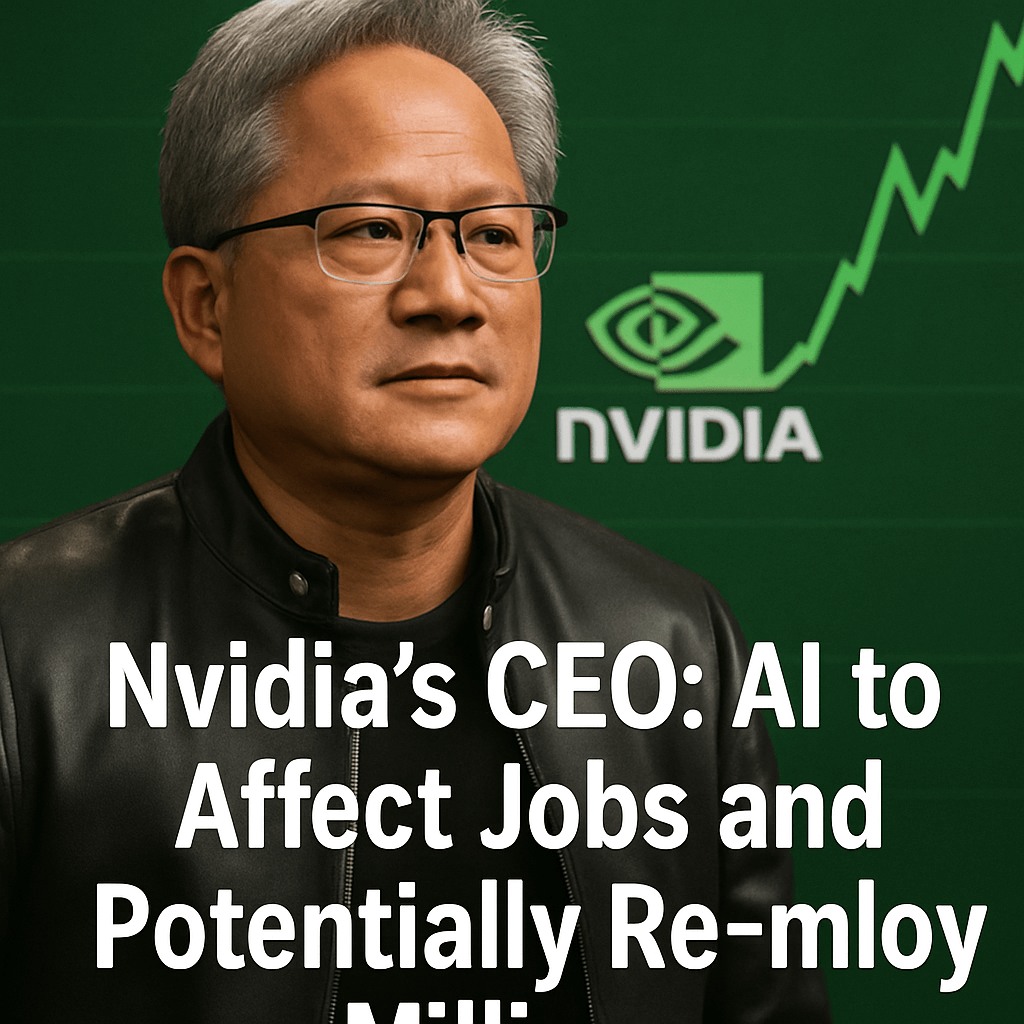Nvidia’s CEO: AI to Affect Jobs and Potentially Re-employ Millions

At the Milken Institute’s Global Conference in May 2024, Nvidia CEO Jensen Huang delivered a stark forecast: generative AI will touch every role in the global economy immediately. Far from sounding a purely pessimistic note, Huang argued that embracing AI tools could reverse talent shortages and boost productivity, potentially putting 30–40 million people back to work.
AI Adoption: Risk and Opportunity in the Workplace
“Every job will be affected, and immediately. You’re not going to lose your job to an AI, but you’re going to lose your job to someone who uses AI,” Huang told attendees. His message contrasts with dire warnings from other industry leaders, such as Anthropic CEO Dario Amodei, who recently predicted that up to half of entry-level white-collar roles could vanish within five years.
“Don’t be that person who ignores this technology and as a result, loses your job,” Huang said. “I would recommend 100% of everybody take advantage of AI.”
Technical Analysis of AI Integration
Recent benchmarks, including Nvidia’s own H100 and the newer GH200 Grace Hopper superchip, demonstrate a 2–3× performance uplift in large-language-model inference and fine-tuning workloads compared to prior generations. These accelerators leverage:
- Tensor cores: Mixed-precision matrix multiplication that boosts throughput.
- NVLink interconnect: High-bandwidth GPU-to-GPU communication for large-scale model parallelism.
- Multi-instance GPU (MIG): Securely partitions a single GPU into multiple instances, enabling concurrent workloads.
Enterprises deploying these systems can automate tasks such as report generation, code review, customer-service routing and data labeling, reducing time-to-insight from days to minutes.
Economic Forecasts and GDP Impact
According to McKinsey & Company, widespread AI adoption could add up to $4 trillion annually to global GDP by 2030. Huang’s projection of 30–40 million re-entered workers aligns with forecasts by the World Economic Forum, which expects up to 97 million roles to be created by AI-driven re-skilling, even as 85 million tasks are displaced.
Governments are already responding. The U.S. CHIPS and Science Act has earmarked $52 billion for domestic semiconductor R&D, while the European Union’s AI Act is set to impose risk-based compliance requirements on high-impact AI systems, balancing innovation with safety.
Expert Opinions: Divided on Job Loss vs. Job Gain
Not all leaders share Huang’s optimism. Dario Amodei of Anthropic told Axios that 20% unemployment could accompany breakthroughs that “cure cancer, lift GDP to 10% growth, and balance the budget.” Meanwhile, investors like Mark Cuban argue that new AI-driven industries will emerge, much as dictation pools and secretarial services vanished decades ago.
“There were more than 2 million secretaries and separate dictation employees,” Cuban wrote on Bluesky. “New companies with new jobs will come from AI and increase total employment.”
Workforce Strategies and Policy Frameworks
To harness AI’s promise, analysts recommend a three-pronged approach:
- Reskilling Programs: Public-private partnerships to train workers in prompt engineering, data annotation and AI-augmented decision making.
- Regulatory Sandboxes: Temporary, controlled environments where companies test high-risk models under government oversight.
- Corporate AI Governance: Ethical committees to evaluate fairness, accountability and transparency of deployed systems.
Looking Ahead: Balancing Innovation and Inclusion
As generative AI platforms—such as OpenAI’s GPT-4 Turbo, Google’s Gemini Ultra and Anthropic’s Claude 3—continue to improve, the debate will shift from if jobs change to how societies adapt. Huang’s call is clear: workers who leverage AI as a force multiplier will outcompete those who do not.
Fortune has reached out to Nvidia for additional comments on workforce initiatives tied to its AI accelerators.